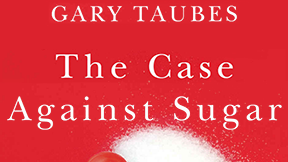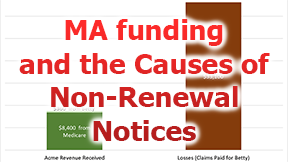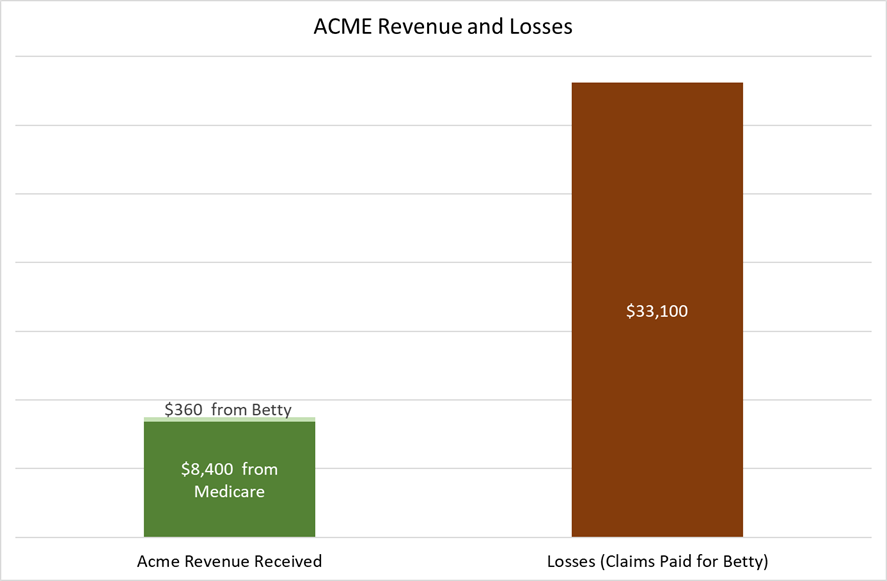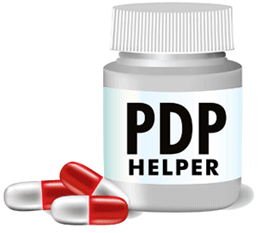 by Dr. Bruce Fife
by Dr. Bruce Fife
Chapter 4, Part 2
Glucose—Blood Sugar and Insulin Resistance: continued
Where we left off is Dr. Fife explaining to us that insulin resistance is the hallmark feature and first step towards developing diabetes. We’ll concern ourselves here only with type 2 diabetes and not juvenile diabetes.
In type 2 diabetes, the pancreas may be able to produce enough insulin, but the cells of the body have become unresponsive to the hormone insulin. This is called insulin resistance. Over 90% of diabetics are of this type.
In the initial course of this disease, the pancreas usually can produce enough insulin to overcome the insulin resistance of the cells. However, the demand placed on the pancreas takes its toll, and insulin production eventually begins to decline. Eventually the pancreas can burn itself out and stop producing the insulin needed.
When this happens, type 2 diabetics will require supplemental insulin.
More than half of all those with type 2 diabetes eventually require insulin to control their blood sugar levels as they get older.
My Comments: I hope Dr. Fife’s words will serve as a dire warning to those who consume lots of refined carbs but have yet to be diagnosed as having pre-diabetes. I would hope that it also serves as a wake-up call to those that have been diagnosed as pre-diabetic and have been prescribed metformin. I also hope that the readers that are diabetic and taking metformin and/or other diabetic pills will hear the alarm bells going on as to the path they are headed on if they insist on continuing to abuse their bodies by consuming too many refined carbohydrates.
Dr. Fife warns that half of those will end up requiring insulin if the disease continues to progress. The progression continues with assorted diabetic complications:
- Skin complications
- Eye complications: Retinopathy, glaucoma, cataracts
- Neuropathy: Nerve damage from diabetes is called diabetic neuropathy
- Foot complications
- DKA (ketoacidosis) & ketones
- Kidney disease (nephropathy)
- High blood pressure—also called hypertension—raises your risk for heart attack, stroke, eye problems and kidney disease.
- Stroke
Folks, this is serious stuff. The obvious answer is to quit consuming or severely reduce “foods” made from refined carbohydrates. The problem, of course, just as with other addictive substances, refined carbs and particularly sugar in its various forms, are highly addictive.
William Dufty in Chapter 1 of his book, Sugar Blues, had this to say when he quit sugar cold turkey:
In about forty-eight hours I was in total agony, overcome with nausea, with a crashing migraine.
Continuing: Dr. Fife explains that diabetes is diagnosed when fasting blood sugar is 126mg/dL or higher. As insulin resistance increases, so do blood sugar levels. Fife also warns that you are not in the clear if you are at 125mg/dL. He explains that insulin resistance begins when fasting levels rise over 90 mg/dL.
Fife points out the correlations between increased sugar consumption and the increase of diabetes. He also states the reverse:
Eating a low-sugar or low-carb diet significantly reduces the risk [of developing diabetes].
He says that the scientific evidence linking excess sugar consumption with an increased risk of diabetes is strong.
My Comments: The problem here is what is “low” and what is “excess?” In Part 1 of Chapter 4, I quoted some dietary experts’ recommendations of consuming no more than 100 calories of sugar per day. If you are a regular consumer of processed foods, you’ll likely exceed this many times over. Keep in mind that 100 calories worth of sugar is 25 grams or slightly under an ounce or about six teaspoons.
Continuing:
Glycemic Index
The glycemic index (GI) is a measure of how quickly certain foods raise blood sugar levels. The GI is on a scale of 0 to 100. Glucose is given a GI of 100, and all other foods are rated in comparison.
A banana has a rating of 51, but a slice of white bread, by comparison, has a GI rating of 75. While the banana tastes sweeter, its fiber slows down the absorption process. The white bread is pure starch and quickly dumps a high load of glucose into the bloodstream once it’s digested.
Chronic Inflammation
Dr. Fife explains that high glycemic foods tend to increase inflammation.
When blood sugar levels rise, the sugar in your bloodstream tends to latch onto certain proteins in the blood vessel wall, causing injury and inflammation. When you eat high glycemic index foods repeatedly, your blood glucose levels are continually elevated, leading to chronic injury and inflammation.
It is inflammation that causes cholesterol to become trapped in the artery wall. Without inflammation being present in the body, there is no way that cholesterol would accumulate in the wall of the blood vessel. Without inflammation, cholesterol would move freely throughout the body as nature intended.
This chronic inflammation of the arteries is one of the distinguishing features of atherosclerosis and coronary heart disease. In fact, chronic inflammation is associated with diabetes, obesity, Alzheimer’s disease, and just about every other chronic degenerative disease. Ed: My emphasis
My Comments: When certain events happen, the cause-and-effect relationship can be immediate and painful. Accidentally placing your hand on a hot burner will give you immediate and painful feedback to the degree that you minimize your injury and avoid such behavior in the future. The effects of a bee or wasp sting is immediate and painful, and deadly for some. Those that have suffered painful stings take precautions to avoid getting stung again.
If I eat a candy bar, woof down half a bag of Oreos, or splurge on three bowls of my favorite chocolate chip ice cream, do I have a heart attack, have kidney failure, or go into a diabetic coma? Not yet and maybe not for decades. Nothing happens in the immediacy to the toxic load that I have subjected my body to. However, if I persist in this behavior, the effects will accumulate and eventually catch up with me.
The dilemma here for any addiction is that the pleasure derived by tickling the dopamine part of our brain outweighs any concerns of potential long term side effects. And just think, the psycho-physicists that Dr. Fife referenced earlier in this chapter understand this physiological response to pleasure and addiction better than we do. It is their job to ensure that we will really like the manufactured food or beverage they create to the point where we become lifetime consumers. That is their bliss point.
Continuing: Dr Fife states that inflammation can be determined by measuring a marker in the blood called C-reactive protein (CRP); the higher the CRP the more inflammation is present.
He succinctly explains the problem:
In the absence of infection, a primary cause of inflammation is eating excessive amounts of sugar. Sugar causes inflammation and exponentially* increases your chances of developing chronic diseases. Ed: My emphasis
My Comments: What if you made a nicely printed sign that you prominently posted in your kitchen that reads as follows.
EATING TOO MUCH SUGAR IS THE MAIN CAUSE OF INFLAMMATION IN MY BODY AND DRAMATICALLY INCREASES MY CHANCE OF DEVELOPING A MYRIAD OF CHRONIC ILLNESSES.
We can assume that the processed food industry will not be handing such signs out.
*Why does Dr. Fife use the word “exponentially” in his text? Exponentially means more rapidly and that the speed of the rapidness keeps increasing.
Let’s say Person A consumes no sugar and no refined carbs and has a virtually zero percent chance of developing diabetes.
Person B consumes 500 calories per day of sugar/refined carbs and has 10 times more likelihood of developing type 2 diabetes compared to Person A.
Person C consumes 1,000 calories per day of refined carbs and has 10 times more chance of developing type 2 diabetes compared to Person B or 100 times more chance compared to Person A.
The above figures are hypothetical only, but Dr. Fife’s point by using the word exponentially is that the chances of contracting a chronic illness becomes increasingly higher with the increased consumption of sugar.
Continuing: Dr Fife further discusses chronic inflammation and arterial disease. He makes this key point:
The relationship between chronic arterial inflammation and heart disease is a much better indicator of heart disease risk then blood cholesterol levels.
My Comments: Assuming that Dr. Fife’s above comment is medically correct, then why are so many doctors pre-occupied with blood cholesterol levels? Over the years I have heard many, many people tell me that their doctor said that they have to get their cholesterol levels lower. The remedy is usually to prescribe a statin drug. With one possible exception, I have never heard anyone report to me that their doctor was just as hell-bent to get their blood sugar levels lowered by restricting their consumption of sugar and other refined carbs.
Continuing: Dr. Fife further explains the correlation of C-reactive protein and inflammation to heart disease.
Dr. Paul Ridker of Brigham and Women’s hospital in Boston evaluated blood samples from more than 28,000 healthy nurses. Those with the highest levels of C-reactive protein had more than four times the risk of having heart trouble. “We were able to find that the C-reactive protein is a stronger predictor of risk than were the regular cholesterol levels, and that’s very important because almost half of all heart attacks occur among people who have normal cholesterol levels,” he said.
Dr. Fife suggests that inflammation may explain why people have heart disease without other known risk factors. These are people with normal cholesterol, who are not diabetic, and appear to be in good physical condition. They make up about a third of all heart attack cases.
My comments: To learn more about C-reactive protein (CRP) here is what the Mayo Clinic has to say:
The level of C-reactive protein (CRP), which can be measured in your blood, increases when there’s inflammation in your body. Your doctor might check your C-reactive protein level for infections or for other medical conditions.
Healthline has this to say:
High CRP levels can also indicate that there’s inflammation in the arteries of the heart, which can mean a higher risk of heart attack. However, the CRP test is an extremely nonspecific test, and CRP levels can be elevated in any inflammatory condition.
I looked at other websites, and the information they offered about the link to diet, nutrition, and particularly sugar was scant. One suggested that a Mediterranean diet was beneficial. Another suggested that an unhealthy diet was one contributory factor towards CRP.
Dr. Fife cuts to the chase and lays the blame on high-glycemic foods. And what are high-glycemic foods? Yep, it’s refined carbohydrates which includes white flour and sugar in its various forms. End
 The 2023 Annual Election Period
The 2023 Annual Election Period


 by Lance D. Reedy
by Lance D. Reedy

 Welcome to the PDP Helper page for Northwest Senior Insurance!
Welcome to the PDP Helper page for Northwest Senior Insurance!